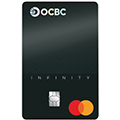Money-smart kids start with money-smart parents
Money-smart kids start with money-smart parents
Teaching kids to budget, letting them make financial decisions help them in later life.
Many older Singaporeans would remember the blue POSB (Post Office Savings Bank) book – an emblem of pride and financial discipline.
After every Chinese New Year, we would eagerly count the crisp new hongbao money we received before tucking them into the blue book and making a trip to the bank, where we would deposit the notes and watch the teller update the savings book.
This simple ritual with our parents marked our financial socialisation, the process where we learn about money through observation, discussion and experience.
“Financial socialisation is how children learn about money – not just how to save or spend, but how to think and feel about it,” Dr David Teo, senior consultant psychiatrist and deputy medical director at Connections MindHealth, tells The Sunday Times.
“It’s also about trust, security and self-control – the emotional side of money that shapes later habits and confidence,” says Dr Teo, who is the father of two young kids.
Studies have shown that parental influence – the way parents teach and model financial behaviour in everyday interactions – has a significant impact on children’s financial well-being and confidence in adulthood.
Children also gain financial attitudes and behaviours from grandparents, uncle and aunties, peers, social media, and pre-school and school.
Financial socialisation starts much earlier than most people think. Children are highly observant and perceptive. Even preschoolers pick up emotional cues on whether money brings calm or conflict at home.
How parents talk about and handle money teaches children whether the world feels safe and predictable.
“When parents are calm and consistent, children feel secure even when resources fluctuate. But if money is tied to conflict, secrecy or stress, they may grow up seeing it as a source of tension or shame,” says Dr Teo.
For instance, he adds, a child learns prudence from watching mum compare prices at a supermarket; associates money with stress from seeing dad get anxious about paying the bills; learns discipline from observing a parent save regularly; and learns that money brings tension when witnessing arguments about expenses.
OCBC Bank’s head of group wealth management, Ms Tan Siew Lee, says children learn how to manage money not just by being told what to do, but also by watching how their parents spend, save and give, and by being actively involved in those decisions.
Increasingly, parents are aware of their role in shaping their children’s financial well-being.
One of Ms Tan’s colleagues sits down with her seven-year-old son whenever he receives hongbao on various occasions, such as his birthday. She splits the money into three buckets: spend, save and give – a simple but powerful way to introduce budgeting, saving for a rainy day and giving back to society in age-appropriate terms.
Her other colleagues have even introduced the concept of investing to their children who are in lower primary school. For every $10 saved, the parent tops it up with $1.
“It’s all about slowly building the muscles so that these concepts don’t come as a shock when children eventually have full autonomy over their money,” Ms Tan says.
These small actions help children understand that saving is not just about putting money aside but also building discipline, preparing for future needs and learning delayed gratification.
Data collected since OCBC launched its MyOwn Account in October 2024 reflects a compelling story of burgeoning healthy financial habits among children who are given the autonomy to manage their money.
OCBC’s MyOwn Account allows children aged seven to 15 to have their own account and debit cards, instead of depositing their money in their parents’ accounts or a joint account.
The account comes with built-in guardrails such as daily spending limits and real-time notifications that parents can monitor through their own OCBC mobile app while giving children the autonomy to make financial decisions.
Ms Tan says savings account balances have risen by more than 3½ times since the launch, reflecting a steady pattern of saving.
Children mostly spend on essentials: food (around $9 each time), mini marts and supermarkets ($6) and transport ($4). These three categories make up 60 per cent of what they spend.
Entertainment like movies, arcade games or the occasional Pop Mart toy make up only 6 per cent, showing that they enjoy having fun but keep such expenses limited.
Ms Tan reckons that when children are given the right tools and autonomy to make financial decisions, and when parents actively involve them in financial activities, they tend to be more prudent.
It is also helpful that the account makes financial habits visible in an age where money is pretty much digital.
“Parents can see the numbers, track patterns and have meaningful conversations with their children about money. It’s not just about having a bank account. It’s about building confidence and capability, so that today’s children grow into financially savvy teenagers and adults,” Ms Tan says.
TEACHING THEM TO SWIM
Homemaker Cindy Seah tells ST that she wished her parents had taught her how to budget, instead of just telling her to “keep saving and don’t spend at all”.
“I wished they showed me, for example, given $10, how much to save and how much I can spend. I had no concept of how money was earned, except that I saw my dad leave the house early and come home late,” she says, adding that her traditional parents also did not talk about insurance as it was a taboo subject.
The mother of two opened an OCBC MyOwn Account each for her daughter, 11, and son, nine, to teach them budgeting and planning, and not just “save and save”, like she had been told to do when growing up.
“They are at the right age and are learning maths in school. They understand dollars and cents. I want them to learn about the value of money and how hard it is to earn it. They can’t just go to the supermarket and buy this and that with their parents’ hard-earned money,” Ms Seah says.
Her daughter, Xin Yi, has since gained a better understanding of budgeting and the need to save for big-ticket items like overseas holidays and even buying a dream house in future. When shopping, she now compares not just prices but also the quality of the item before making her purchase.
Her son, Zhi Ying, is also more aware of his spending, forgoing his favourite Milo drink in order to save more than his sister, Ms Seah says.
“Before (having their own account), Papa or Mama paid for everything. They had no concept of how much things cost and how money is earned. Now, they are both motivated to save, learn financial management and the difference between needs and wants,” says the proud mum.
Teaching children about money is like teaching them to swim, Dr Teo says.
“You start in the shallow end. Too much freedom too soon, and they panic; too much protection, and they never learn to float on their own,” he cautions.
Exposure to financial learning should evolve with age and emotional maturity, he says.
Early childhood (two to six years old)
Children in this age group think concretely. They understand coins and notes but not abstract concepts like debt or investment.
At this stage, money lessons should focus on sharing, waiting and gratitude. When encouraged to make small choices like whether they would like to save or spend $1, children develop autonomy and initiative.
However, overemphasis on mistakes or restriction can lead to guilt and shame, Dr Teo warns.
Middle childhood (seven to 11 years old)
At this stage, children begin to grasp cause and effect as well as delayed gratification. They need to be validated and want to do well.
“Earning pocket money or saving for a toy helps them link effort to reward. Recognising (their) achievements – ‘You saved for this yourself!’ – builds competence and pride, whereas excessive criticism or comparison may foster inferiority or insecurity,” Dr Teo says.
Adolescence (12 years old and above)
In adolescence, children can grasp abstract ideas and have conversations about budgeting and generosity. Long-term goals help shape their identity and values. This is the stage where parents can introduce more complex concepts like social giving and budget.
HOW TO TALK TO KIDS ABOUT MONEY
Openness is healthy, but it must be age-appropriate and emotionally safe, Dr Teo says.
For example, healthy openness can sound like this: “We’re saving for an overseas trip at the end of the year, so we’ll not travel during the June holidays to save up for that.”
This gives reassurance and also teaches planning, prudence and delayed gratification.
In contrast, unhelpful oversharing can sound like this: “Dad has lost his job. We might lose our house.”
This transfers adult worries and guilt to children, who cannot do anything to solve the problem.
Dr Teo has seen patients whose parents frequently quarrelled about money. This made the children anxious about spending money. They grew up equating thrift with safety. This limited their enjoyment and generosity in adulthood.
So when it comes to sharing with kids about money, it is important to: (1) Explain simply and factually; (2) Model calm problem-solving; and (3) Involve children in small, positive day-to-day financial decisions, such as choosing where to eat or what toy to buy – and weighing the costs and benefits with them.
“Shielding children completely from money matters can leave them unprepared for the real world in adulthood,” Dr Teo says.
“Children need to feel confident that their parents are in control, and that money problems can be managed calmly. That sense of stability – what mental health professionals term a secure base – helps them face life’s uncertainties with confidence.”
When parents talk calmly about money, children learn that security comes not just from wealth but also from trust and stability in relationships.
Openness builds trust. Containment builds safety. The balance helps children learn that money is a part of life, not the measure of it, he says.
FINANCIAL STRESS CUTS ACROSS INCOME LEVELS
Financial stress is often less about how much we have, and more about our emotional relationship with money, Dr Teo says.
From his observations in clinical practice and personal life, patterns often mirror early life experiences.
Those raised in scarcity may overcompensate and overspend, adopting the attitude that “I deserve it now”.
Those raised under strict financial control may feel guilty spending at all, often assuming “I cannot spend without feeling guilty”.
Then there are those whose parents overindulged without teaching them the value of money, importance of budgeting and prioritising. Their children may become so accustomed to a certain lifestyle that they may not be able to sustain it with prudence in adulthood as they were not taught limits and delayed gratification.
Some examples include “I must buy a private apartment. I can't live in an HDB flat” or “I must eat at an air-con place. I can’t stand hawker centres”.
Dr Teo stresses that while it is important for parents to teach children about the value of money, it is equally vital to remind them and ourselves that money is only a tool to help us live well, not a measure of a life well-lived.
“I have noticed that’s how many get disillusioned and feel empty despite seemingly having a lot materially,” he says.
Conversations about money do not have to be heavy or complicated. What matters most is consistency, honesty and age-appropriate lessons that empower children rather than burden them.
By planting small seeds of wisdom today, parents can help their children grow into adults who feel confident, capable and ready to navigate life’s financial journey with balance and optimism.
Source: The Straits Times © SPH Media Limited. Permission required for reproduction.
Important information
Terms & Conditions governing the OCBC MyOwn Account for Parents This advertisement has not been reviewed by the Monetary Authority of Singapore. Cross-Border Market Disclaimers









